A surge in the popularity of vaping nicotine, especially among young Kiwis, has left a cloud over New Zealand's smokefree ambitions. Jonathan Killick reports.
When six-year-old Harry (Names have been changed) started punching holes in the walls of his whānau’s South Auckland home, his parents knew something was really wrong.
The sudden irritability was getting him into trouble at his primary school, and he blamed his family for doing nothing to make the feeling go away.
His mum and dad were calling anyone they knew, desperate for advice.
No parent should have to explain to their addicted six-year-old why they can’t buy them a vape.
How did this happen to Harry?
Neither of his parents smoke.
The family of nine is just getting by, living in a two-bedroom apartment.
Harry’s older brothers picked up the habit from school and had been hiding their old vapes under the mattress, where Harry found them.
It started with a few puffs, and lead to him needing to inhale nicotine every 10 to 15 minutes.
This story is part of a societal battle that has seen schools set up cameras outside of toilets, lobby groups jostling for the official narrative, and the phenomenon of a vape shop on what seems to be every street corner.
Reporter Jonathan Killick, too, has been seduced by the alluring cola-banana-berry pull of the vape but, unable to ignore the facts being blown in my face, “I’m determined to quit.”
Staggering statistics, released in December, show a quarter of 18- to 24-year-olds now have a daily habit. Among 15- to 17-year-olds it’s 15 per cent.
Smokefree practitioner Louis Hilton works at Auckland Hospital, primarily with pregnant mothers who want to quit smoking, but says he’s increasingly coming across nicotine-addicted children.
He’s not funded to help people who vape, but when Harry’s parents approached him, not knowing where to turn, he knew he had to help.
“The last year it has gone from mainly cigarettes to every second person being a vaper,” says Louis.
He understands that vaping has helped smokers transition away from cigarettes, but in his view, rushed legislation left gaps and the void has been filled by businesses that stood to make a lot of money.
“There were 12 vape shops on the street of the last house that I visited, and one had neon lights and arcade machines.”
Some parents he’s worked with had been buying vapes for kids, unaware they had nicotine in them.
“It's just like a lolly with all these flavours.
“They should be sold in a plain white room with a couple of choices of flavours, not marketed to young people.”
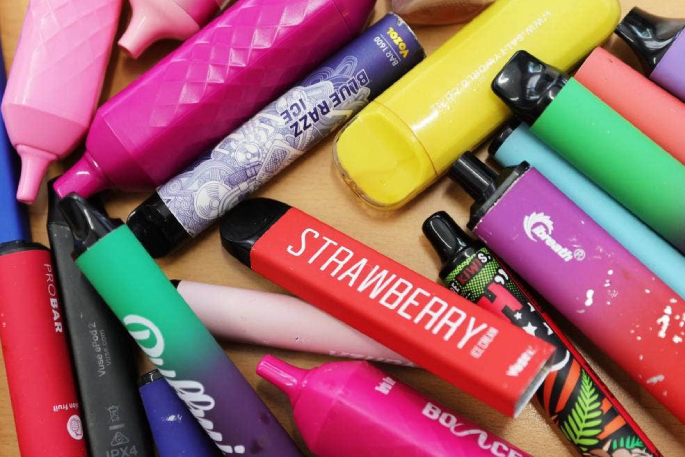 A collection of vapes confiscated by principal Shane Ngatai of Rhode St School. Mark Taylor/Stuff.
A collection of vapes confiscated by principal Shane Ngatai of Rhode St School. Mark Taylor/Stuff.
It’s time for me to quit the nic sticks
“At 31, I’m among the growing number of New Zealanders who have been sucked into vaping,” says Jonathan.
“I’d had an occasional cigarette over the years, but it wasn’t until I tried a friend's vape at a party that it turned into a full-blown addiction.
“Recently, I was shocked when a pair of young teenagers approached me in the street asking for a puff of my vape.
“I said no; it was a wake-up call, and prompted me to try and quit."
He says quitting, though, is easier said than done.
“I wake up on day one and the cravings hit immediately," says Jonathan.
“It’s hard to think about anything else when your body is screaming at you for nicotine. Days three to five are the most difficult as the last traces of the substance leave my system.
“My jaw is locked in a clench and I have a brain fog that blocks my ability to write."
He says his "poor partner is dealing with me being an all-round grump".
“I end each day wrestling with the thought that the awful tense feeling could be gone with one quick puff.”
When Gisborne’s Sharon Pihema found out her daughter was vaping at school she was shocked to learn there wasn’t support for quitting vaping.
She contacted her GP and a quit line, but the best advice she got was that her daughter should try sucking on a pen, because it was similar in shape to a vape.
“We are talking about addiction here and when young people go through withdrawal, they don’t understand what's happening.
“It can be really scary for them,” says Sharon.
Now, Sharon is a Māori Liaison Officer working in schools with a focus on preventing vaping among teens and children.
“They are having to vape at school, even waking up during the night to have a vape.”
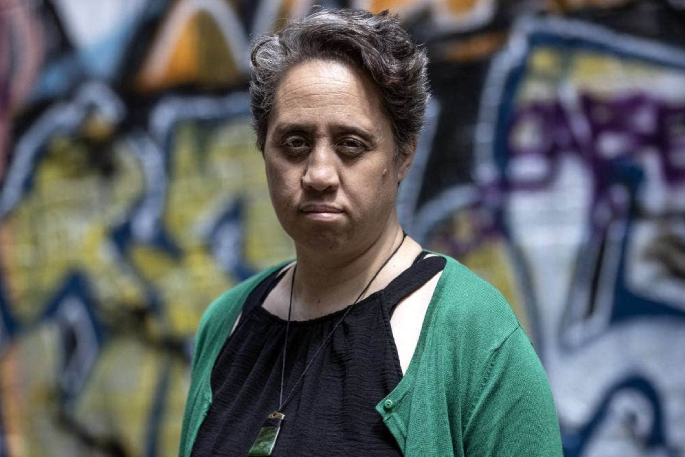 Vaping has affected schools of every decile, according to liaison officer, Sharon Pihema. Photo supplied.
Vaping has affected schools of every decile, according to liaison officer, Sharon Pihema. Photo supplied.
Sharon works in Tairāwhiti and Auckland, and says the problem has gripped schools of every decile.
One school spent $750,000 on vape detectors and cameras in the bathrooms.
In some schools, only one student is allowed to sign out to use the bathroom at a time, while a teacher stands outside.
Other schools have a ‘three strikes’ system before they implement stand-downs.
Then, there are schools that tell Sharon that if they stood down every student who vaped, they would have few left.
“They say they can’t stop it now, it’s out there, and they’re trying to manage it the best they can.”
According to the most recently-released National Health Survey by the Ministry of Health, there are 408,000 daily vapers in New Zealand.
The most at risk are 18- to 24-year-olds, 25 per cent of whom now have a daily habit.
In 2022, the ministry reported that 37 per cent of them had never touched a cigarette before picking up a vape.
In the total population, 18 per cent of those hooked on vaping hadn’t tried smoking.
The industry has grown to be worth an estimated $450 million in sales annually.
“After day seven, I start to turn a corner with my own quitting journey,” says Jonathan.
“I don’t feel like crap, but I’m still thinking about vaping every half-hour. Everything reminds me of it, from sitting in traffic to doing the dishes.
“Then, suddenly, I’ve made it to two weeks and my head feels clearer."
He says he's able to take a long-haul flight without stressing about withdrawals.
“I’ve proven to myself it's possible, but regrettably, while on holiday, I fall off the wagon.”
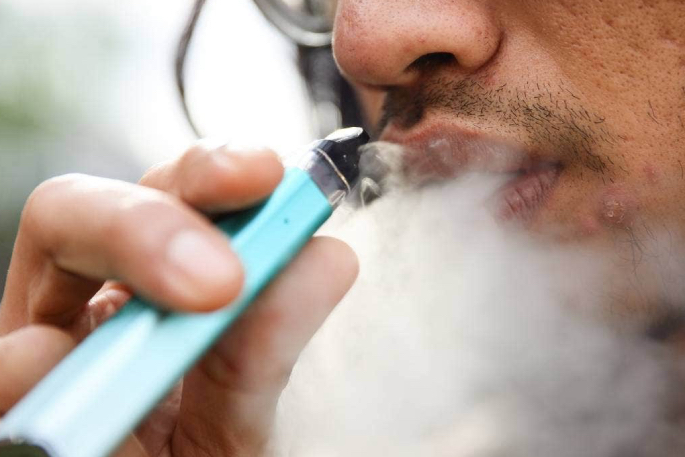 Adolescents are easily influenced by their vaping peers, says addiction expert Hayden McRobbie. Aiman Amerul Muner/ Stuff.
Adolescents are easily influenced by their vaping peers, says addiction expert Hayden McRobbie. Aiman Amerul Muner/ Stuff.
The bigger the hit, the deeper the addiction
Professor Hayden McRobbie is an addiction researcher specialising in tobacco.
“He reassures me that quitting can take multiple attempts, and the important thing is not to give up,” says Jonathan.
“The longer you go without a cigarette or vape, the easier it becomes,” says Professor McRobbie.
“After five years, less than two per cent of people report consistent craving.”
“He says the best way to quit is to go in with the mindset of deciding not to have a single puff,” says Jonathan.
”If you’re still feeding the brain with the odd bit, then the addiction continues,” says Hayden.
Hayden was chair of the Technical Expert Advisory Group that assisted the Government on regulation of vaping when it was adopted as a strategy to stop smoking in 2018.
He views vaping as a legitimate tool to stop smoking, but urges smokers to have a plan for how they are going to quit vaping.
He also acknowledges that the widespread introduction of vapes has impacted youth.
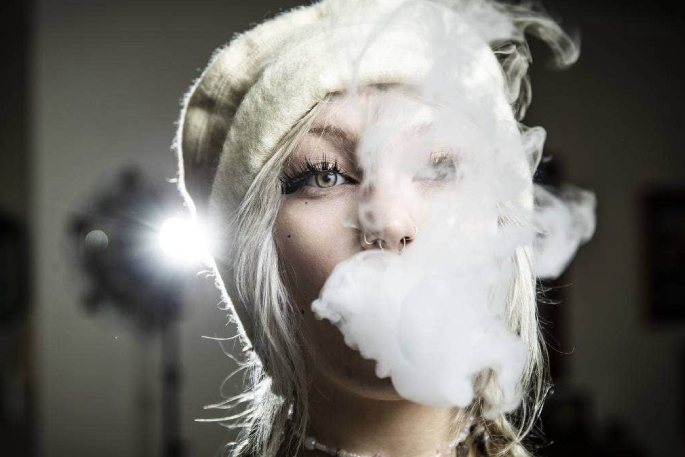 Ministry of Health-funded organisation ASH, claimed in 2019 that vaping was just a fad among kids. Photo supplied.
Ministry of Health-funded organisation ASH, claimed in 2019 that vaping was just a fad among kids. Photo supplied.
“I am concerned about young people, because once you’re dependent you've lost control of that behaviour," says Hayden.
“Adolescents in general are not always good at planning. They're also very influenced by their peers.”
He suggests that students may pick up vapes because they perceive it as a stress reliever, but says that’s a fallacy.
“Actually, when people quit they report being less stressed because they’re not worried about their next puff or withdrawals.”
Hayden says that since being introduced, vaping products have become more efficient at delivering a faster and stronger hit, which could fuel addiction.
“How quickly nicotine reaches the brain is important – with a faster delivery, it's a deeper reward. Nobody gets addicted to patches, for example, because they are a slow release.”
Letitia Harding of the Asthma and Respiratory Foundation has spent much of the last five years warning of the addictive nature of vapes, and feels like she’s been watching a train wreck in slow motion.
She says the Ministry of Health had “tunnel vision”, being so focused on vaping as a tool to stop smoking that it didn’t consider the new market it was creating.
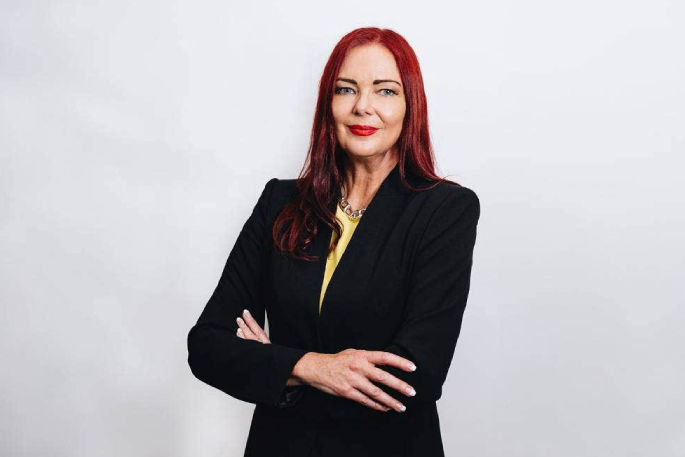 Letitia Harding of the Asthma and Respiratory Foundation. Photo supplied.
Letitia Harding of the Asthma and Respiratory Foundation. Photo supplied.
“I think the ministry went along for the ride," says Letitia.
“They set up the vaping advisory group and a third were made up of industry.
“We said ‘let's have one of our scientific advisors on there’, but they didn’t want a bar.”
The group included Nell Rice of Cosmic, QJ Satchell of NZVAPOR and an Australian importer, Andrew Dent.
Regulation prohibiting advertising of vaping and sale to under-18s only came in 2020, following lobbying by Letitia and her team.
“We were told to pull our heads in very early on because we were outspoken," says Letitia.
“We had board members approached by the ministry, saying it's an area we shouldn’t be in.”
Meanwhile, the ministry-funded Action for Smokefree 2025 (ASH) lobby group was giving television interviews in 2019 saying youth vaping was not an issue society needed to be “desperately worried about”.
“Vaping is cool among kids, next year it will be something else," the ASH chair Robert Beaglehole said at the time.
He also said "let's not overreact to the concern among children, let’s make sure that these effective, safe and much less harmful products are widely available".
Since then, as the problem has become clearer, calls have grown to tackle vaping as well as cigarettes.
As a start, Letitia wants vapes out of petrol stations and dairies, and to halt the number of specialist vape retailers at today’s figure of approximately 1300.
“It’s been the same playbook all over again - smokers were dying, so [the tobacco industry] had to addict a new generation.”
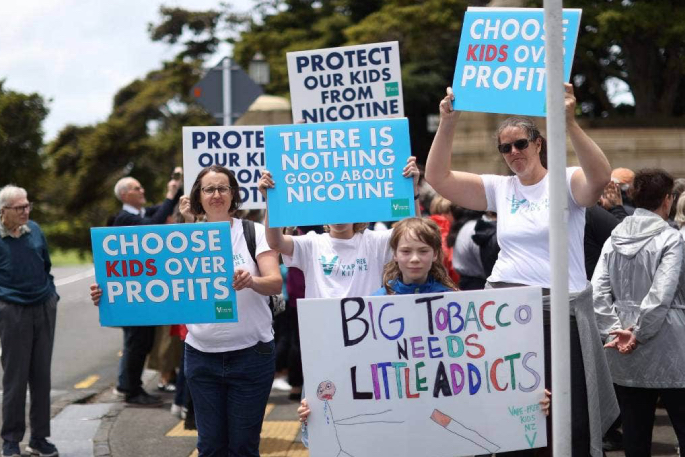 A protest at Aucklands Domain by Vape Free Kids NZ following an announcement from the Government it qould scrap restrictions on smoking. Lawrence Smith/ Stuff.
A protest at Aucklands Domain by Vape Free Kids NZ following an announcement from the Government it qould scrap restrictions on smoking. Lawrence Smith/ Stuff.
Who’s profiting off $450 million a year in sales?
Just who is behind vapes in New Zealand?
Within speciality vape stores there is a nebulous number of varieties and flavours that would be impossible to catalogue here, but the ubiquitous brands available in most gas stations and dairies are Alt, Solo and Vuse.
Vuse is owned by British American Tobacco, while Alt and Solo were founded by two Kiwis, Ben Pryor and Jonathan Devery.
The pair owns several other brands including the Vapo chain.
From the start, Ben and Jonathan Devery have argued that the way to get smokers to switch to vaping was to ensure widespread availability.
Their Alt brand has featured prominently in their public commentary, presented as an “alternative”.
Meanwhile, their Solo brand has used fashionable young models and tag lines like “easy vaping anywhere”.
Ben is a lawyer turned entrepreneur who, after previously launching a keto diet foods brand, appears to have been successful in the vaping industry.
Jonathan Devery was a quantity surveyor, and is now the chair of the Vape Industry of NZ.
Jonathan Devery tells Stuff on behalf of Alt and VIANZ that youth vaping is the industry’s “largest existential threat”.
He sees retailers that sell vapes to young people as the problem, and is calling for a crackdown.
“If young people continue to use these products, further restrictions will regulate vaping to the point it is no longer a successful smoking cessation aid, and Big Tobacco will win.”
Devery also blames the media’s “emotive, attention-grabbing” coverage of the issue.
“With so much publicity, it is understandable that vaping would be a trending activity for young people, especially the rebellious,” he says.
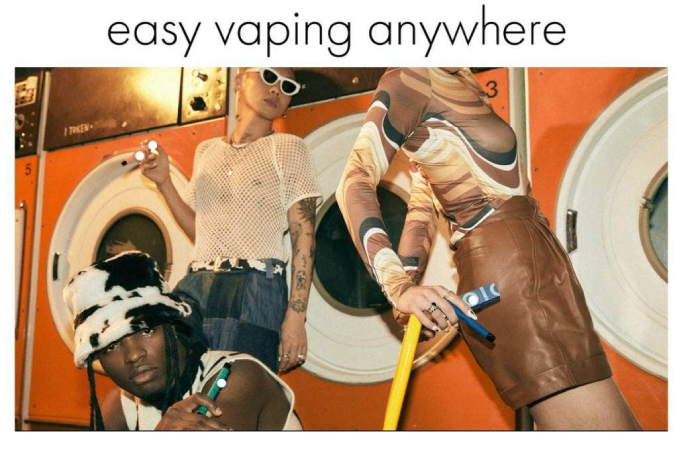 This is an image of the Solo vape brand website. It's co-owner Jonathan Devery "absolutely refutes" the brand targets youth with its marketing. Photo supplied.
This is an image of the Solo vape brand website. It's co-owner Jonathan Devery "absolutely refutes" the brand targets youth with its marketing. Photo supplied.
Asked why the pair had also launched the Solo brand, and made use of lifestyle marketing elements, Devery said they had a variety of brands to serve a “diverse” market.
“We absolutely refute any suggestion this product is targeted at youth... Smokers come from all walks of life, so to help smokers quit, we must offer products that suit them.
“We do not keep any brands ‘at arm’s length’, we just have the two separate entities.”
Devery rejects the notion that vaping has created a new generation of addicted Kiwis.
“[That assumes] that people who have started vaping would never have started smoking.
“It is not possible to conclusively predict who would have started smoking in their lifetime.
“If vaping had not been available, youth smoking rates may well have continued to climb.”
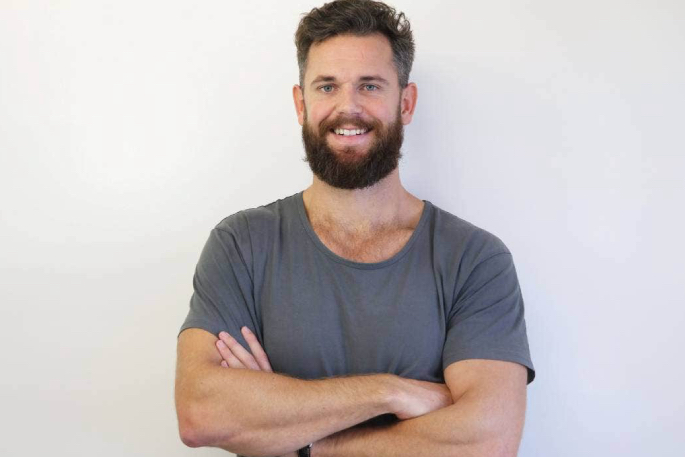 Jonathan Devery, director of Alt New Zealand and chair of the Vaping Industry Association of NZ. Photo supplied.
Jonathan Devery, director of Alt New Zealand and chair of the Vaping Industry Association of NZ. Photo supplied.
A spokesperson for the Ministry of Health says it was watching the trend of vaping among 15- to 24-year-olds closely and encouraged addicted Kiwis to consult their GP about quitting.
“New changes coming into effect will further tighten restrictions on vaping to help tackle the youth vaping issue – we do not want our young people vaping or smoking.”
Vapes that make use of reusable pods will continue largely as they are, but from December 21, flavoured disposable vapes can no longer exceed 20 milligrams, down from a max of 50 milligrams.
They will also need to have removable batteries and child safety locks.
One new-generation model brought into the newsroom by a colleague looks like a bright orange bottle with a screw-top and nozzle.
She had confiscated it from her 14-year-old son.

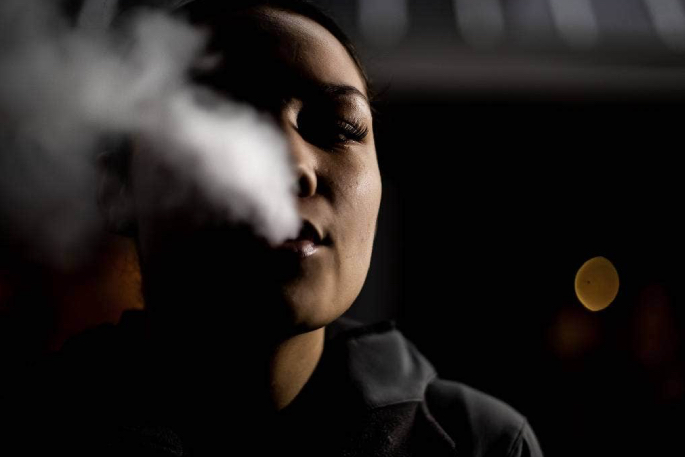

3 comments
HAHAHA
Posted on 03-01-2024 19:42 | By Yadick
NZ smoke free - HAHAHA
Thats like expecting NZ to be sex free.
The answer is to ban ALL vapes. Prescription only and only after extensive testing with positive results. Shut the stores down and if it costs a bomb to go back to cigarettes so be it but make it REALLY hard for those on a benefit. Raise the price of cigarettes more. They have to go cold turkey in prison so there's absolute proof it can be done. It's called priorities. It's called responsibility. Both of which society has robbed the individual of through being all PC and pandering.
SHUT THE STORES DOWN AND BAN THE STUPIDITY OF VAPES. The excuse of vaping to give up smoking is exactly that, just another excuse.
Start Parenting
Posted on 04-01-2024 08:42 | By Thats Nice
Its infuriating these days that people go straight to victim mentality when something goes awry. Don't blame the brother for giving vape to a 6-year-old (not plausible that the 6-year-old snuck under his brother's mattress every 15 minutes to steal vape with no one noticing). Don't blame the parents for not supervising their 6-year-old as he managed to "apparently" get so addicted to vape he started punching holes in the wall (something I have never seen and find very hard to believe). Blame the evil vape, everyone else is a victim. It's pathetic. Vapes help thousands of people quit smoking and is an amazing product. We can't let poor parenting and lack of rule enforcement in schools stop such a good product. Take responsibility for your children and start parenting. If your children vape take a look in the mirror. Be a better parent.
@That's Nice
Posted on 05-01-2024 13:39 | By morepork
"Vapes help thousands of people quit smoking and is an amazing product." Can you provide a source for this statement? I have done a lot of serious research on this topic and all of the credible evidence refutes it. Assuming it WERE true, do you have figures for HOW MANY of the "thousands" of people who it "helped stop smoking", then went on to be addicted to vaping? Can we agree that everybody would be better off without cigarettes AND vaping? Vaping is a cynical industry that simply preys on the weakness of some people. Millions of dollars from it go to overseas every month, to interests who manipulated the government with false and biased reports that it helps stop smoking. We should ban it and use revenues from it in the interim, to help people get off it.
Leave a Comment
You must be logged in to make a comment.